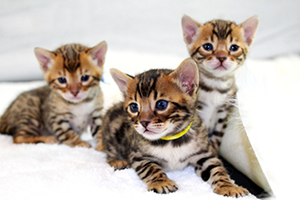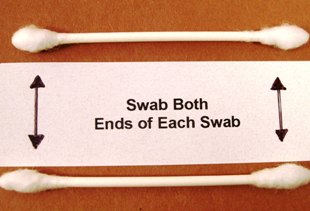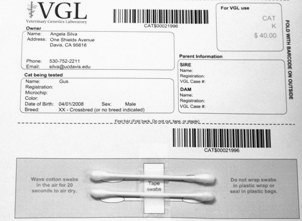Quick Summary
Click here for Price and Turnaround Time
Phenotype: Korat GM2 gangliosidosis causes progressive neurologic dysfunction and premature death in Korat cats. Disease onset is observed as early as 4 weeks of age, beginning with fine head tremors, followed rapidly by ataxia, and progresses to death before 8 months of age.
Mode of Inheritance: Autosomal recessive
Alleles: N = Normal, GM2k = Korat GM2 gangliosidosis
Breeds appropriate for testing: Korat
Explanation of Results:
- Cats with N/N genotype will not have Korat GM2 gangliosidosis and cannot transmit this GM2 variant to their offspring.
- Cats with N/GM2k genotype will not have Korat GM2 gangliosidosis, but are carriers. They will transmit this GM2 variant to 50% of their offspring. Matings between two carriers are predicted to produce 25% kittens with Korat GM2 gangliosidosis.
- Cats with GM2k/GM2k genotype will have Korat GM2 gangliosidosis, a fatal condition.
$44 one test per animal
$66 this test + Korat GM1 per animal
Cat DNA tests are carried out using cells brushed from your cat's cheeks and gums using household cotton swabs.
The cat DNA submission form with instructions and a place to tape the cotton swabs is sent to you via email after you place an order, and can be printed from your home computer. DNA test kits are no longer mailed.
Instructions
Step-By-Step:
1.
 Purchase regular household cotton swabs for cat DNA collection (the cotton swabs can be purchased at a pharmacy or drug store)
Purchase regular household cotton swabs for cat DNA collection (the cotton swabs can be purchased at a pharmacy or drug store)
2.

Make sure the cat has not had anything to eat or drink for at least 1 hour prior to collecting sample.
When swabbing kittens, isolate each kitten from the mother, littermates and any shared toys for 1 hour prior to swabbing. Kittens should not have nursed or eaten for 1 hour prior to collecting sample.
If collecting samples from more than one cat, make sure to sample one cat at a time and wash your hands before swabbing another cat.
3.
 Use both ends of the two cotton swabs for a total of four swabs.
Use both ends of the two cotton swabs for a total of four swabs.
4.
Place the cotton head of the swab between the cat’s gums and cheek and rub or rotate the swab back and forth for 15 seconds. Repeat with each cotton swab head, for a total of 4 swabs. We recommend swabbing a different area of the gums with each swab head.
5.
Wave the swab in the air for 10-15 seconds to air dry it before attaching it to the submission form.
6.
 After swabbing the cheek and gums, tape the cotton swabs to the bar-coded submission form printed from your MyVGL account.
After swabbing the cheek and gums, tape the cotton swabs to the bar-coded submission form printed from your MyVGL account.
ATTENTION:
- Do not collect saliva/drool – the key to obtaining a good sample is getting cheek cells on the swab.
- Do not rub swab on the cat’s tongue or teeth – this will result in poor quality sample.
- Do not collect a sample from a kitten that has recently nursed – the mother’s genetic material can rub off on the kitten’s mouth and contaminate the sample.
Gangliosidoses are degenerative, fatal neurological diseases caused by abnormal accumulation of lipids known as gangliosides in central and peripheral nervous systems, and nerve cells in particular. Cats affected with gangliosidosis have progressive neurologic dysfunction and premature death. Two forms of gangliosidosis affect Korat cats – GM1 and GM2. Both have a genetic basis and a recessive mode of inheritance. Two copies of the defective gene are needed to cause the disease. Both diseases cause similar progressive neurologic dysfunction, including tremors, ataxia and dysmetria. Disease progression is more rapid in GM2.
Korat GM2 is caused by a mutation in the feline Hexoaminidase β-subunit (HEXB) gene. Disease onset is observed as early as 4 weeks of age, beginning with fine head tremors, followed rapidly by ataxia, and progresses to death before 8 months of age.
Testing for GM1 and GM2 in Korat cats to assists owners and breeders in identifying affected and carrier cats. Breeders can use these tests as a tool to avoid breeding carriers together which would produce 25% affected offspring.
